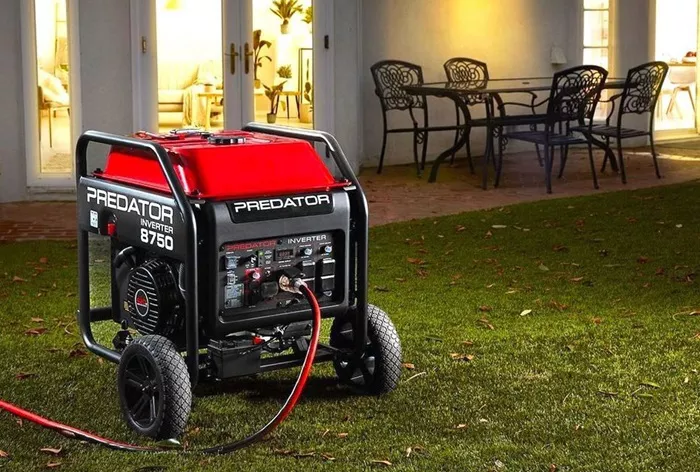Switching fuel types on a running generator is a critical procedure that requires careful planning and execution to ensure safety and efficiency. This guide will provide a thorough, step-by-step approach to making this transition seamlessly and effectively.
Understanding Generator Fuel Systems
The Basics of Generator Fuel Types
Generators typically operate on various fuel types, including gasoline, diesel, propane, and natural gas. Each fuel type has its own set of characteristics and operational benefits. Understanding these differences is crucial before attempting any fuel switch.
- Gasoline is commonly used in portable generators due to its availability and ease of use. However, it is less efficient and can be hazardous due to its flammability.
- Diesel generators are favored for their durability and efficiency. They are often used in industrial settings where extended operation is required.
- Propane and natural gas are clean-burning fuels that are ideal for residential use and offer lower emissions compared to gasoline and diesel.
The Fuel Switching Mechanism
Generators that are designed to switch between fuel types usually have a built-in mechanism that facilitates this process. Understanding how this mechanism works is vital for safe and effective fuel switching.
- Dual-Fuel Generators: These units can operate on two different types of fuel, often gasoline and propane. They have a switch or dial to toggle between fuel types.
- Conversion Kits: Some generators can be modified with conversion kits to use different fuels. These kits usually require installation and adjustment by a professional.
Preparing for a Fuel Switch
Safety Precautions
Switching fuel types while the generator is running involves significant safety risks. To minimize these risks, follow these safety precautions:
- Turn Off the Generator: Always shut down the generator before switching fuel types to avoid potential hazards.
- Ventilation: Ensure that the area around the generator is well-ventilated to prevent the accumulation of harmful fumes.
- Check for Leaks: Inspect the fuel system for any leaks or damage before making the switch.
Tools and Equipment Needed
Having the right tools and equipment can streamline the fuel switching process. Essential items include:
- Fuel Transfer Pump: For transferring fuel from one tank to another.
- Fuel Hoses and Connectors: To facilitate the transfer and connection of different fuel types.
- Safety Equipment: Such as gloves and goggles to protect yourself during the procedure.
The Fuel Switching Process
Step-by-Step Instructions
Follow these steps to switch fuel types on a running generator safely and efficiently:
- Shut Down the Generator: Ensure the generator is turned off and disconnected from any load to prevent accidents.
- Drain the Existing Fuel: Use a fuel transfer pump to remove the current fuel from the generator’s tank. Dispose of the fuel according to local regulations.
- Reconnect Fuel Lines: Attach the new fuel type to the generator’s fuel system. Make sure all connections are secure and leak-free.
- Refill with New Fuel: Fill the generator’s tank with the new fuel type. Ensure that the fuel type is appropriate for your generator’s specifications.
- Prime the Fuel System: Depending on the generator model, you may need to prime the fuel system to ensure proper flow.
- Start the Generator: Turn on the generator and let it run for a few minutes to ensure it operates smoothly with the new fuel.
Troubleshooting Common Issues
During the fuel switching process, you may encounter several issues. Common problems include:
- Fuel Leaks: Inspect all connections for leaks and tighten as necessary.
- Difficulty Starting: Ensure that the fuel system is properly primed and that the new fuel is reaching the engine.
- Performance Issues: If the generator is not running smoothly, check for air pockets or impurities in the fuel.
Post-Switch Maintenance and Checks
Regular Maintenance
After switching fuel types, it’s essential to perform regular maintenance to ensure the generator operates efficiently:
- Inspect Fuel Lines: Regularly check for wear and tear or leaks.
- Monitor Performance: Keep an eye on the generator’s performance and address any issues promptly.
- Change Fuel Filters: Replace fuel filters as needed to ensure clean fuel delivery.
Record Keeping
Maintain detailed records of fuel switches and maintenance activities. This documentation helps in tracking performance and addressing any recurring issues.
see also: How Does a Wind Generator Produce Electricity?
Conclusion
Switching fuel types on a running generator is a complex procedure that requires careful attention to detail and adherence to safety protocols. By understanding the fuel systems, preparing adequately, and following the correct process, you can make this transition smoothly and ensure the continued reliability of your generator.
FAQs:
How often should I switch fuel types in a generator?
Switching fuel types should be based on the generator’s usage requirements and fuel availability. It is generally done when changing the fuel source or for maintenance purposes.
Can I switch fuel types without turning off the generator?
No, switching fuel types should always be done with the generator turned off to prevent safety hazards and ensure proper fuel system operation.
What should I do if the generator does not start after switching fuel types?
Check for issues such as fuel line leaks, air pockets in the fuel system, or impurities in the new fuel. Ensure the generator is properly primed and that all connections are secure.
Is it necessary to clean the fuel system when switching fuels?
It is a good practice to inspect and clean the fuel system, especially if switching from one type of fuel to another, to avoid contamination and ensure optimal performance.
Related topics:
- TOP 3 Honda Whole Home Generator
- The Pros and Cons of Whole House Generators: A Comprehensive Guide
- 5 Best Generator for Power Outage at Home

